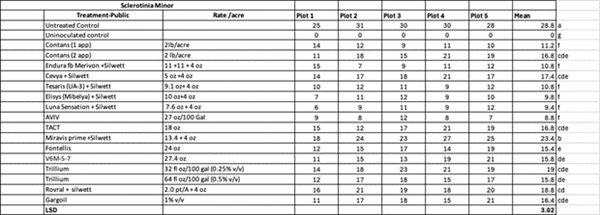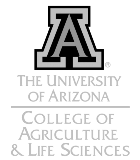Nov 12, 2025
Soil Health: Nitrogen Cycle and Management in Agricultural Soils
Nitrogen (N) is the nutrient required in the largest amount by plants and the most common nutrient needed in crop fertilization. When N fertilizers are applied to a field, they are immediately subject to a myriad of possible reactions and transformations, as described as the N cycle (Figure 1).
Nitrogen is the most abundant element in the atmosphere (approximately 80-82%) as nitrogen gas (N2) but is inert and not directly usable by most organisms. Thus, atmospheric N gas is not bioavailable. In desert crop production systems, bioavailable N is the second most common limiting factor behind water.
To become bioavailable, N2 gas in the atmosphere must be converted into different mineral or inorganic forms through a process called nitrogen fixation (Figure 2), which is carried out by specific bacteria, lightning, and industrial processes such as the Haber-Bosch process in commercial fertilizer production (Nevins et al., 2020).
When N is fixed or transitioned from N2 gas into inorganic forms such as ammonia (NH3) and then into ammonium (NH4+) and nitrate (NO3-) in the soil, it can then be taken up and utilized by plants, entering the food chain and becoming available to other organisms. Nitrate-N (NO3-) is the preferred form for plant uptake (Figure 1).
Nitrogen immobilization is a process in soil systems where soil microbes consume and temporarily convert inorganic nitrogen into organic compounds, making it unavailable for plants. This occurs when decomposing plant material with a high carbon-to-nitrogen (C:N) ratio is added to the soil, as microbes consume the available mineral or inorganic N to break down the carbon-rich organic materials, such as crop residues. The process stops once the residue has decomposed, and the N cycle continues as organic forms are converted and released into the soil as inorganic forms in the soil through mineralization.
Mineralization of soil N is the process of converting organic forms of N into inorganic or mineral forms (Figure 3).

Figure 1. The nitrogen cycle. Source: Stevenson, 1982.

Figure 2. Nitrogen fixation is the conversion of dinitrogen gas (N2) to ammonia (NH3) and can be catalyzed by biotic and abiotic processes. Source: Nevins et al., 2020.

Figure 3. Nitrogen mineralization as organic N is converted or “mineralized” to
ammonium (NH4+) in the soil environment. Source: Nevins et al., 2020.
Nitrification is the process of converting ammoniacal N (NH4+) into nitrite (NO2-) and then
into nitrate (NO3-). Both steps are carried out by naturally occurring chemoautotrophic
bacterial organisms, Nitrosomonas and Nitrobacter (Figures 4 and 5).

Figure 4. Nitrification is the transformation of ammonium (NH4+) to nitrite (NO2-) and then
(NO3-) by naturally occurring soil bacterial oxidizing organisms. Source: Nevins et al.,
2020.

Figure 5. The two step process of soil nitrification shows the specific naturally occurring
soil bacterial organisms necessary for the reactions, Nitrosomonas and Nitrobacter.
Nitrogen Mineralization–Immobilization Transformation (MIT) Cycle in Soils
The nitrogen (N) mineralization–immobilization cycle represents the continuous biological transformation process between organic and inorganic forms of N in soil (Figure 6). It is driven primarily by the activity of soil microorganisms that consume mineral (inorganic) N and the those that decompose organic matter.
The MIT cycle represents the core elements of what we are trying to manage in the soils for crop production systems to optimize plant available N and produce healthy crops (Ros, et al, 2011 and Johnson et al., 2007).
Healthy soils are constantly active in these transformation processes. Thus, any inorganic or mineral source of N that is applied to the soil is immediately subject to immobilization and possibly converted into organic forms of N by soil microbes. Organic forms of N are then not available to plants for uptake and utilization until those microbes die and they are then exposed to decomposition and mineralization.

Figure 6. Mineralization – Immobilization Transformation (MIT) cycle.
The nitrogen mineralization–immobilization (MIT) cycle is a biologically mediated balance between the release of plant-available N from organic matter and the reverse reactions of sequestration in organisms and organic compounds. The continuous function of the MIT cycle is a key indicator of healthy soil, and it is central to soil fertility and plant nutrition management and efficient N fertilization.
References:
Ros, G. H., E.J.M. Temminghoff, and E. Hoffland. 2011. Nitrogen mineralization: a review and meta‐analysis of the predictive value of soil tests. European Journal of Soil Science, 62(1), 162-173.
Johnson, J.M.F., N.W. Barbour, and S.L. Weyers. 2007. Chemical composition of crop biomass impacts its decomposition. Soil Sci. Soc. Am. J. 71:155-162 doi:10.2136/sssaj2005.0419
Nevins, C.J., S.L. Strauss, and P. Inglett. 2020. Overview of key soil nitrogen cycling transformations. University of Florida IFAS Extension. SL471/SS684
Stevenson, F.J. 1982, Origin and distribution of nitrogen in soils. In: F.J. Stevenson, Ed., Nitrogen in Agricultural Soils, American Society of Agronomy, Madison, WI, pp. 1-42.
































